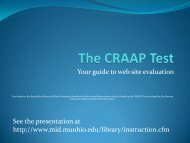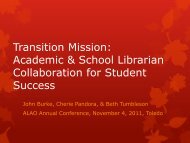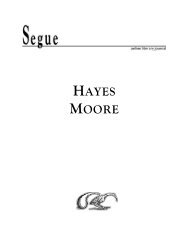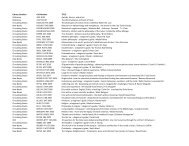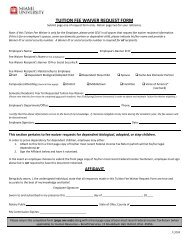Bibliography of Assessment Alternatives: Portfolios
Bibliography of Assessment Alternatives: Portfolios
Bibliography of Assessment Alternatives: Portfolios
You also want an ePaper? Increase the reach of your titles
YUMPU automatically turns print PDFs into web optimized ePapers that Google loves.
• articulate well that the goal <strong>of</strong> portfolios is to allow students to take control <strong>of</strong> learning<br />
• describe the kinds <strong>of</strong> classrooms in which portfolios are most likely to be successful<br />
• outline a step-by-step plan for getting started and involving parents<br />
• describe a procedure for teaching self-evaluation and goals-setting skills<br />
• help with student-teacher portfolio conferences<br />
• include complete portfolios for a second- and fifth-grade student<br />
• include an appendix <strong>of</strong> reproducible letters, questionnaires, forms, and charts<br />
(AL# 400.3PORCLT)<br />
Coalition <strong>of</strong> Essential Schools. [Various Articles on Exhibitions <strong>of</strong> Mastery and Setting<br />
Standards], 1982-1992. Available from: Coalition <strong>of</strong> Essential Schools, Brown<br />
University, Box 1969, One Davol Sq., Providence, RI 02912, (401) 863-3384.<br />
Although not strictly about portfolios, this series <strong>of</strong> articles discusses performance<br />
assessment topics and goals for students that are relevant. The articles are: Rethinking<br />
Standards; Performances and Exhibitions: The Demonstration <strong>of</strong> Mastery ; Exhibitions:<br />
Facing Outward, Pointing Inward; Steps in Planning Backwards; Anatomy <strong>of</strong> an Exhibition;<br />
and The Process <strong>of</strong> Planning Backwards.<br />
These articles touch on the following topics: good assessment tasks to give students, the<br />
need for good performance criteria, the need to have clear targets for students that are then<br />
translated into instruction and assessment, definition and examples <strong>of</strong> performance<br />
assessment, brief descriptions <strong>of</strong> some cross-disciplinary tasks, the value in planning<br />
performance assessments, and the notion <strong>of</strong> planning backwards (creating a vision for a high<br />
school graduate, taking stock <strong>of</strong> current efforts to fulfill this vision, and then planning<br />
backward throughout K-12 to make sure that we are getting students ready from the start).<br />
No technical information nor performance criteria are included.<br />
(AL# 150.6VARARD)<br />
Coleman, Laurence J. Portfolio <strong>Assessment</strong>: A Key to Identifying Hidden Talents and<br />
Empowering Teachers <strong>of</strong> Young Children. Located in: Gifted Child Quarterly 38,<br />
Spring 1994, pp. 65-69.<br />
The “Early <strong>Assessment</strong> for Exceptional Potential <strong>of</strong> Young Minority and/or Economically<br />
Disadvantaged Students” project trained teachers to use portfolios to assess exceptional<br />
potential in young students and to alter their instruction. Project participants first listed 18<br />
primary identifiers <strong>of</strong> exceptional potential. These included such things as “exceptional<br />
<strong>Assessment</strong> Resource Library, (503) 275-9582 17 Portfolio <strong>Bibliography</strong><br />
(formerly Test Center) NWREL, December 1996




